How and when are insurers implementing index-based strategies as they seek liquidity, diversification, and risk mitigation? S&P DJI’s Raghu Ramachandran and Anu Ganti join BlackRock’s Andrew Masalin to discuss what’s driving passive outperformance and the use of ETFs by insurers through the lens of SPIVA.
The posts on this blog are opinions, not advice. Please read our Disclaimers.What Do Insurance Companies Need to Know About SPIVA?
The Gold Standard of Indices Meet's Today's Technology
Finding Fee Savings in Fixed Income
The November 2023 Rebalance of the S&P 500 Low Volatility Index
A Tactical Look at Sectors
What Do Insurance Companies Need to Know About SPIVA?
The Gold Standard of Indices Meet's Today's Technology
Meet the S&P 500 FC Index, an innovative index designed to adjust allocations based on intraday volatility signals as it seeks to increase stability, limit exposure to drawdowns, while optimizing exposure to the S&P 500 via BofA’s Fast Convergence technology.
The posts on this blog are opinions, not advice. Please read our Disclaimers.Finding Fee Savings in Fixed Income

One of the benefits of indexing is its low cost relative to active management. As indexing has grown, investors have benefited substantially by saving on fees and avoiding active underperformance. These benefits are not limited just to equities but have also extended to other asset classes including the fixed income space, where fees can play a particularly pivotal role.
In Exhibit 1, we see that index bond fund expenses in the U.S. and Europe have been consistently lower than their active counterparts for the past decade. While that spread has narrowed in recent years, we still observe a fee differential of 39 bps in the U.S. and 55 bps in Europe as of 2022.
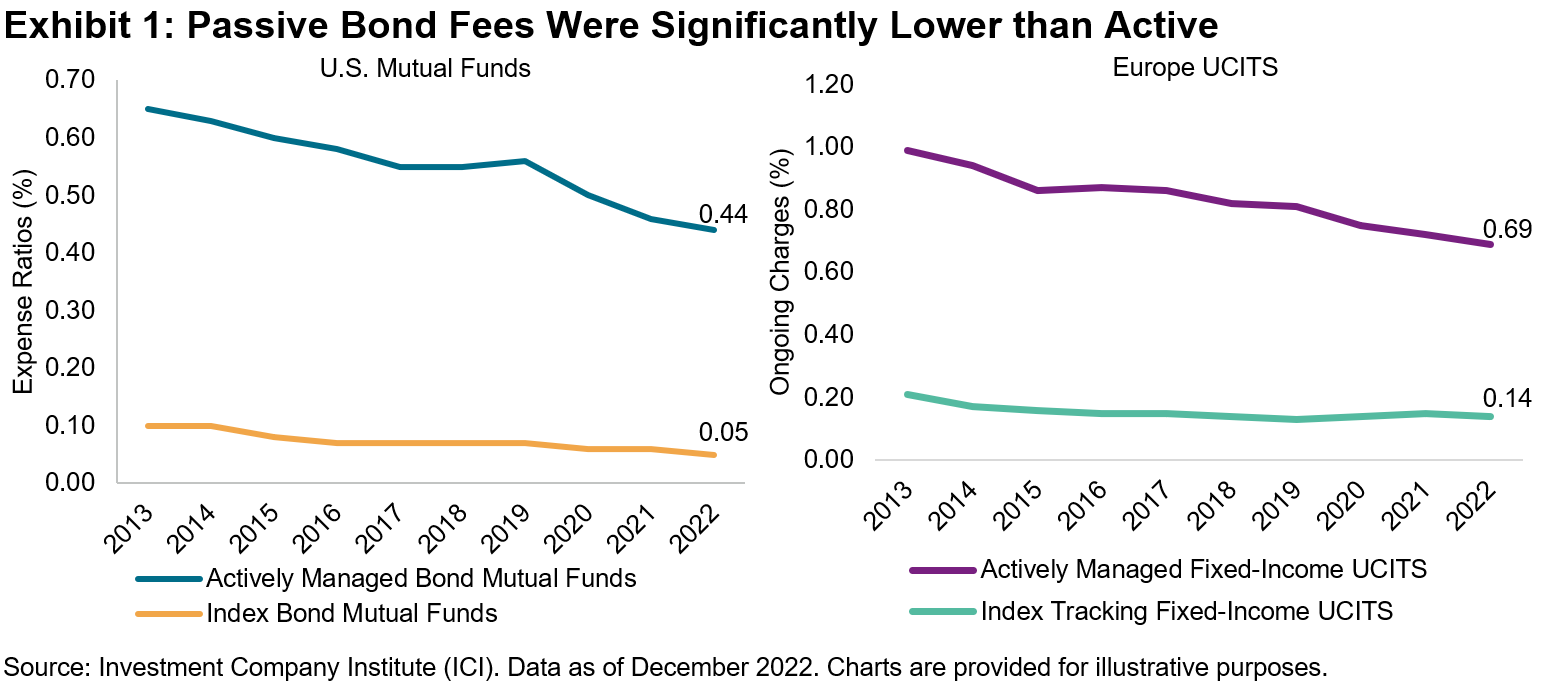
Using the same average fee differentials between active and passive fixed income funds in the U.S. and Europe, as applied regionally to approximately USD 102 billion of assets invested in mutual funds and ETFs tracking iBoxx corporate bond indices in both regions, we can estimate a current run rate of equal to at least USD 465 million per year in fee savings made by passive investors thanks in part to the iBoxx series (see Exhibit 2).
Of course, this USD 465 million estimate understates the full cost savings of the fixed income index industry, since it encompasses funds tracking only select indices from S&P Dow Jones Indices in the U.S. and Europe.
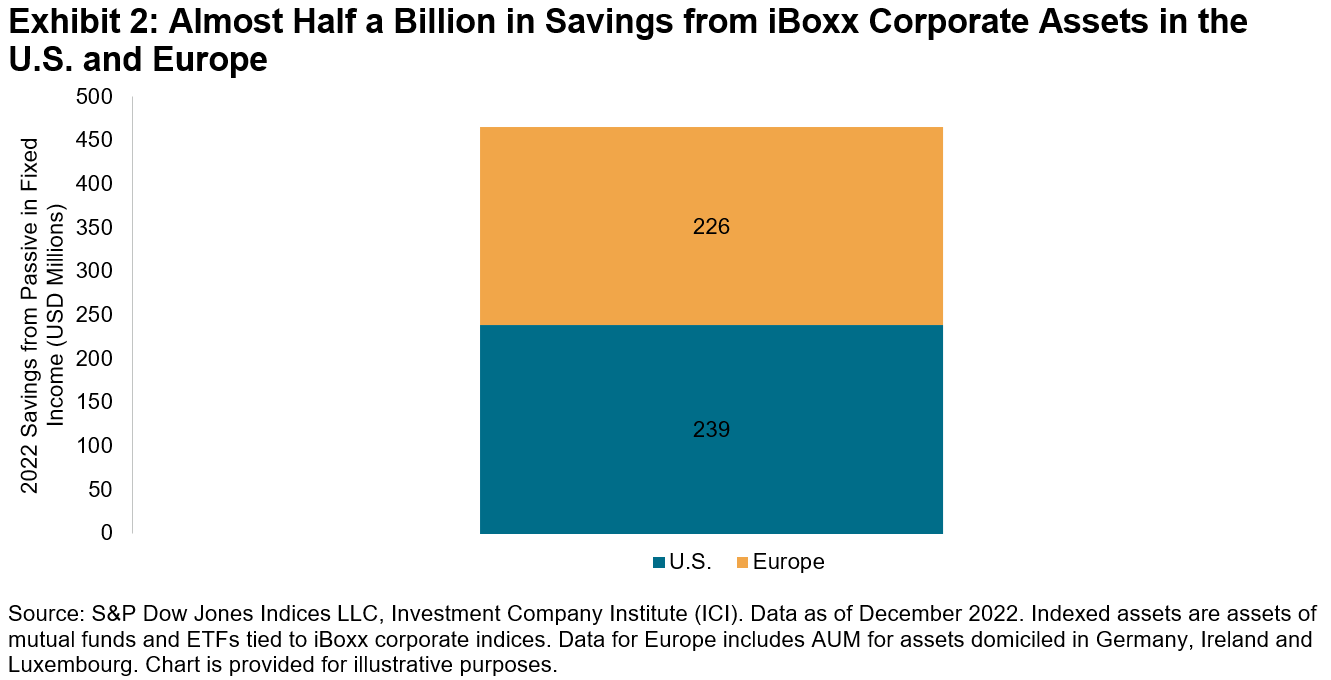
Our Annual Survey of Indexed Assets shows global assets tracking our iBoxx Corporate indices were USD 121 billion as of December 2022 (this also includes institutional segregated mandates, as well as assets outside the U.S. and Europe). To provide context on the size of the passive market in fixed income, this number makes up only 1% of the global total of USD 11.5 trillion in assets of all open-end bond funds1 and only around 0.5% of global rated corporate debt outstanding.2 In other words, there is plenty of headroom for future passive growth in fixed income, and the prospects for greater fee savings are promising.
Obviously, the savings generated by the shift from active to passive management would be of no consolation if investors lost more in performance shortfalls than they gained in reduced fees. As readers of our SPIVA® reports may know, in the 15 years ending in June 2023, 94% of all actively managed General Investment Grade bond funds lagged the iBoxx $ Liquid Investment Grade Index. High Yield results were almost equally disappointing. As indexing in fixed income has gained momentum, bond market participants have benefited from fee savings and avoidance of active underperformance, a powerful combination.
1 2023 Investment Company Fact Book, Investment Company Institute. Regulated open-end funds include mutual funds, exchange-traded funds (ETFs) and institutional funds.
2 Credit Trends: Global State of Play: Debt Growth Diverging by Credit Quality. Level of global rated corporate debt reached USD 23.2 trillion as of July 1, 2023.
The posts on this blog are opinions, not advice. Please read our Disclaimers.The November 2023 Rebalance of the S&P 500 Low Volatility Index

- Categories Factors
- Tags factors, GICS, Low Vol, low volatility, S&P 500 Low Volatility Index, sectors, US FA
The S&P 500® continued its strong performance this year after posting a 9.8% gain in a span of less than three weeks from Oct. 30 to Nov. 17, 2023. During this period, the 10-year U.S. Treasury yield dropped approximately 45 bps1 and October’s year-over-year headline CPI inflation cooled to 3.2%.2 As Exhibit 1 shows, since the previous rebalance for the S&P 500 Low Volatility Index on Aug. 18, 2023, through the most recent rebalance on Nov. 17, 2023, the S&P 500 was up 3.7%, versus a decline of 0.4% for the S&P 500 Low Volatility Index. This type of divergence can happen especially during periods of strong performance and low volatility for the S&P 500. During this period, the annualized daily standard deviation for the S&P 500 was a relatively low 13.6%.
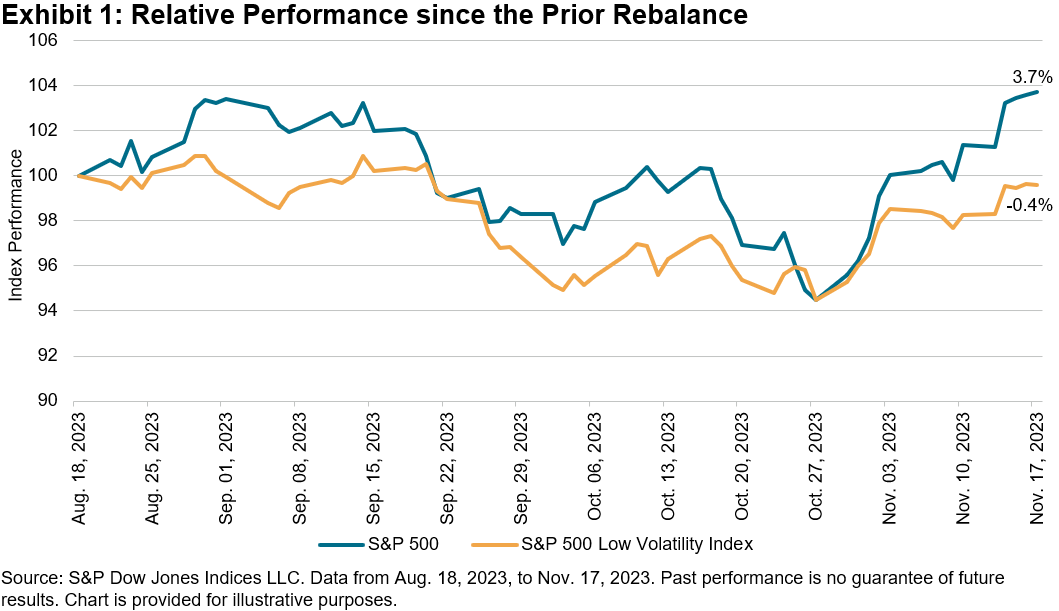
As Exhibit 2 shows, the trailing one-year volatility decreased for all 11 GICS sectors from July 31, 2023, to Oct. 31, 2023. The widespread decline in volatility across all 11 GICS sectors followed the same pattern in the three months prior to this period. Measured in absolute terms, volatility decreased the most for the Energy sector, although it remained the most volatile sector at 24.9%. As of Oct. 31, 2023, Consumer Staples was the least volatile sector, with a daily realized volatility of only 11.6%.
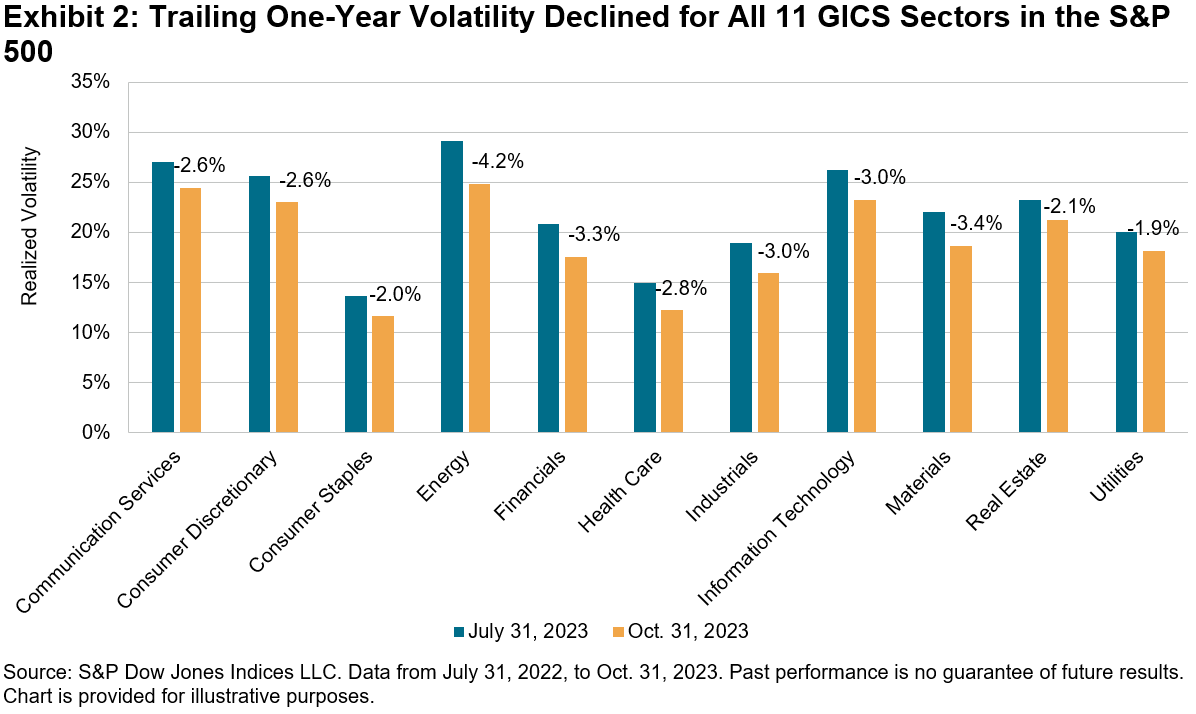
Amid the overall decrease in volatility, the latest rebalance of the S&P 500 Low Volatility Index brought some material changes to sector weightings, most notably in the Health Care and Consumer Discretionary sectors.
Following the most recent rebalance, Health Care’s weight dropped by 6.4%. Approximately 4.0% shifted to the Consumer Discretionary sector, more than doubling its weight to 7.3%. Other notable recipients were the Information Technology sector, which saw its weight almost double from 2.3% to 4.2%, as well as the Consumer Staples sector, which increased its weight to 26%.
After the Energy sector received a small allocation of approximately 1%, the Materials sector is now the only sector with no allocation in the S&P 500 Low Volatility Index. The latest rebalance became effective after the market close on Nov. 17, 2023.
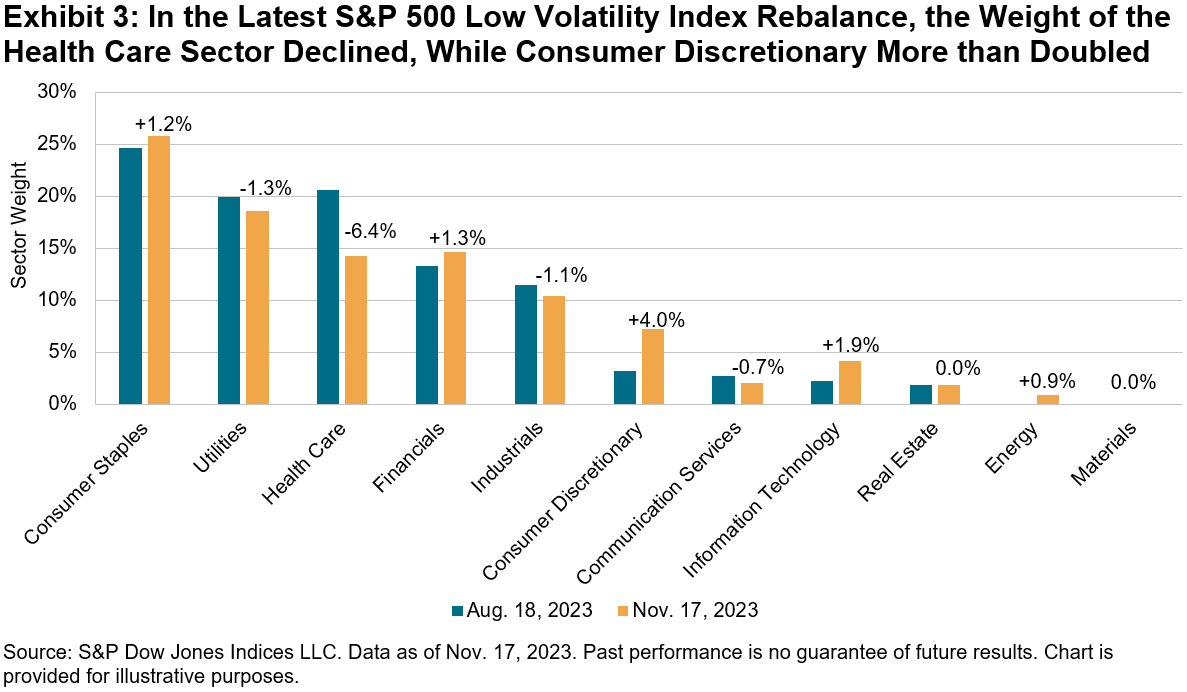
1 https://fred.stlouisfed.org/series/DGS10
2 https://www.bls.gov/news.release/cpi.nr0.htm
The posts on this blog are opinions, not advice. Please read our Disclaimers.A Tactical Look at Sectors
How are advisors using sector data to understand market trends and inform investment decisions? S&P DJI’s Anu Ganti joins Fairlead Strategies’ Katie Stockton to discuss practical applications for sector indices.
The posts on this blog are opinions, not advice. Please read our Disclaimers.

